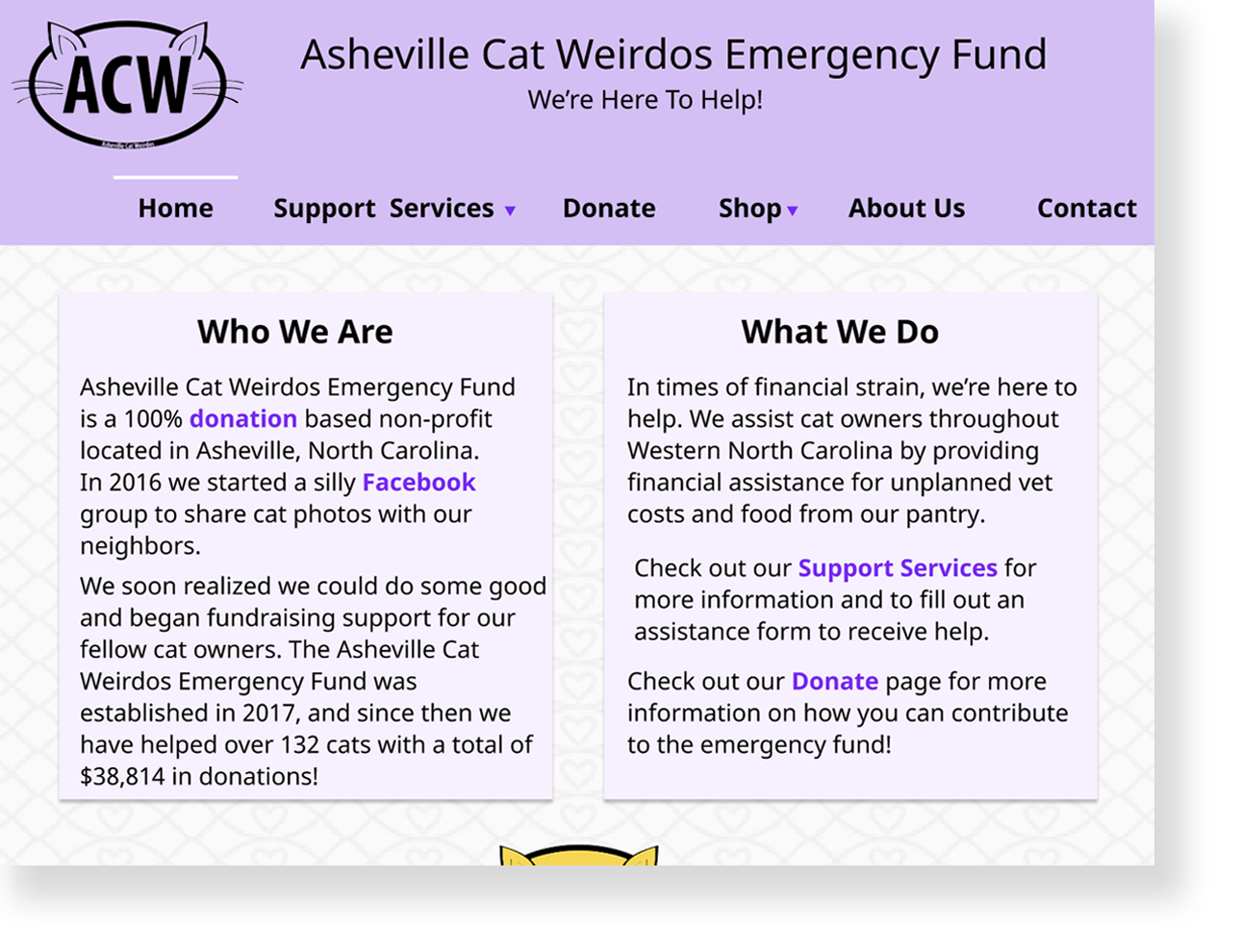
Prototype Development
ACW Emergency Fund Website Prototype
This project was developed for a local non-profit to discover usability issues with the
content and functionality on their current website and determine solutions for improvements.
Scroll and click through the website prototype to discover its functionality!
The Process

Heuristic Evaluation
Usability research began with a Heuristic Evaluation of the current ACW Emergency Fund website using Jakob Nielsen's 10 Usability Heuristics for User Interface Design. Each web page within the scope of the assessment was analyzed and compared to the established usability principles and measured against Nielsen's severity scale.

User Research
Surveys were distributed to over 35 representative users to evaluate their experience with the current website and gather qualitative and quantitative data for user assessment.

Persona Creation
After analyzing the user research results, 5 personas were created portraying different members of the target audience which addressed the users’ motivations and goals.

User Stories
A narrative of user stories was developed for each persona, focusing on the content and functionality that would assist them in accomplishing their goals. Acceptance criteria was determined by considering the individual needs of the persona and the intended result of their objectives.

Usability Testing
Remote usability testing was conducted with 6 representative users as participants. Six task scenarios were presented to the participants and their click paths, comments, task times, and task completion was observed. Testing data was analyzed and recorded in a report summarizing the usability issues discovered, task performance, and the recommended solutions for improvement.

Prototype Development
Utilizing the heuristic evaluation, user research, and usability testing, a high fidelity prototype with wireflows was created to resolve the issues discovered on the current website.

Prototype Testing
Remote prototype usability testing was conducted with 3 representative users as participants. Six task scenarios were presented to the participants; the tasks were observed, and testing data was recorded and evaluated. Usability improvements were confirmed during data analysis, and verified improved performance with a success rate of 100% and task time expedited by 124%.

Usability Recommendations
Testing results and usability recommendations for the issues discovered were presented in a detailed methodology report. These suggested improvements were supported by the analysis of user research, current site testing, and prototype testing.
















